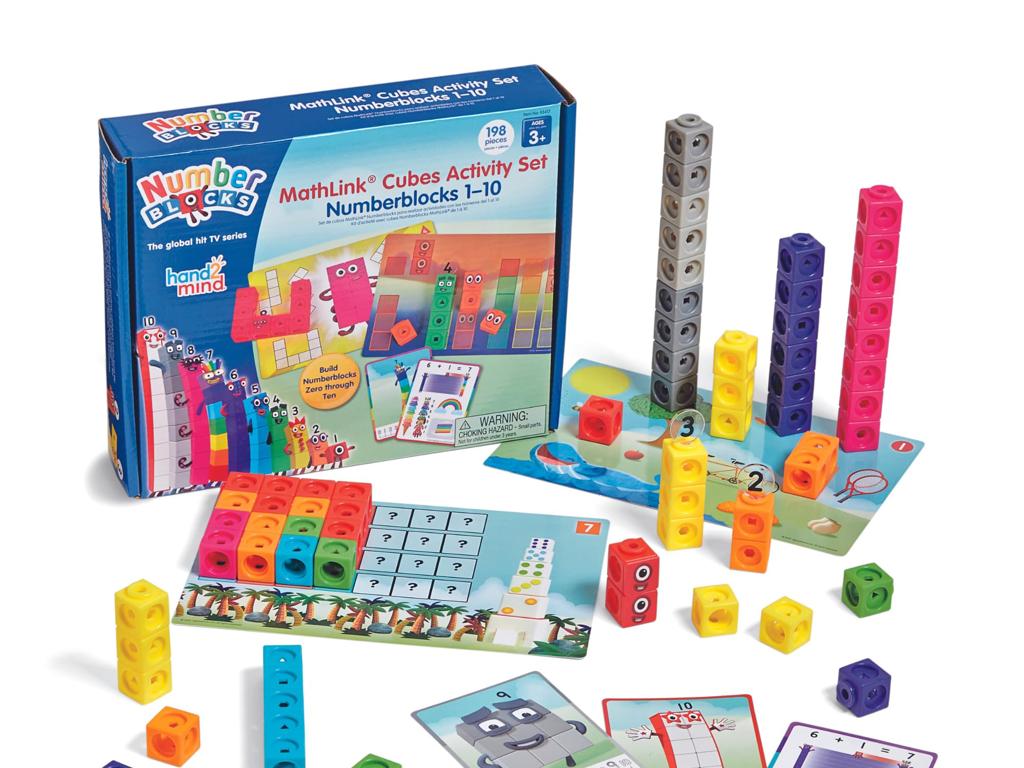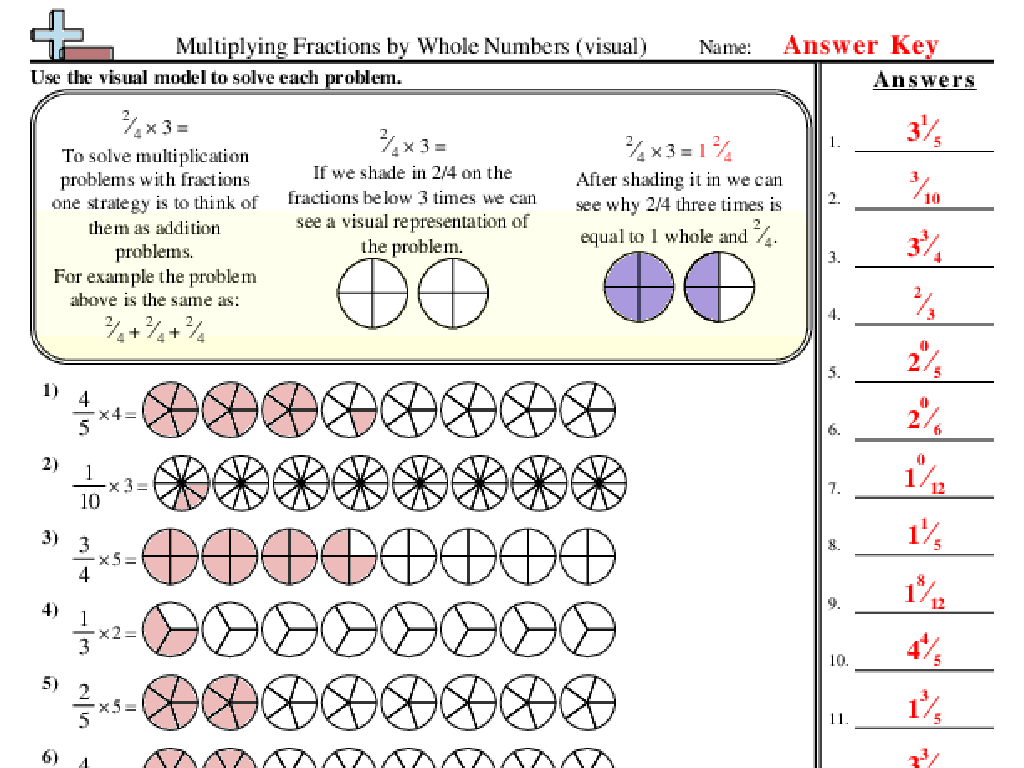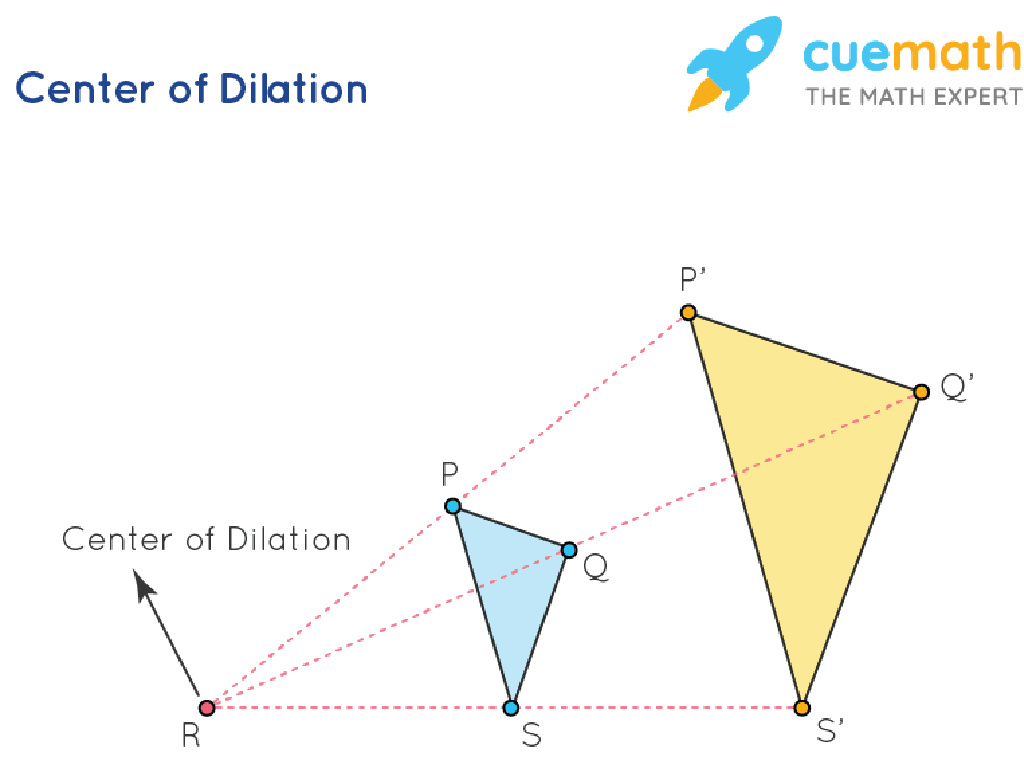Estimate Quotients When Dividing Mixed Numbers
Subject: Math
Grade: Sixth grade
Topic: Divide Fractions
Please LOG IN to download the presentation. Access is available to registered users only.
View More Content
Estimating Quotients with Mixed Numbers
– Recap: Fractions and Division
– Fractions represent parts of a whole; division is sharing equally.
– Understanding Mixed Numbers
– Mixed numbers combine whole numbers and fractions.
– Importance of Dividing Fractions
– Dividing fractions is key in math and real-life problems.
– Estimation Techniques
– Use rounding to estimate the quotient of mixed numbers.
|
Begin with a brief review of fractions, emphasizing that they represent parts of a whole, and division as the process of splitting into equal parts. Then, explain mixed numbers as a combination of whole numbers and fractions, which are often encountered in real-world measurements. Highlight the importance of dividing fractions in various scenarios, such as cooking or dividing a set of items, and how it’s a crucial skill for higher math. Introduce estimation as a useful technique to quickly approximate the result of dividing mixed numbers, which can be particularly helpful when exact calculations are not necessary. Provide examples and encourage students to practice rounding mixed numbers to estimate quotients.
Estimating Quotients with Mixed Numbers
– Understanding estimation
– An estimate is a close guess of the actual value.
– Estimation in division
– Helps simplify mixed numbers before division.
– Real-world estimation
– Used in cooking, budgeting, or time management.
– Practice estimation
|
This slide introduces the concept of estimation, particularly when dividing mixed numbers. Begin by explaining that an estimate is a rough calculation of the actual value, which is especially useful when exact numbers are not required or when quick calculations are needed. Emphasize the importance of estimation in simplifying mixed numbers before division, making the process faster and easier. Provide relatable examples such as adjusting a recipe, planning expenses, or estimating the duration of tasks. Encourage students to think of other scenarios where estimation could be helpful. Conclude with practice problems to reinforce the concept.
Converting Mixed Numbers for Division
– Review conversion to improper fractions
– Class practice with mixed numbers
– Let’s convert 3 2/5 together as a class
– Discuss importance in division
– Necessary step before dividing mixed numbers
– Example: Convert 2 1/3 to an improper fraction
– 2 1/3 becomes 7/3 after conversion
|
Begin the lesson by reviewing the process of converting mixed numbers to improper fractions, ensuring students recall the steps (multiply the whole number by the denominator and add the numerator). Engage the class in a participatory exercise where they convert several mixed numbers to improper fractions. Emphasize the importance of this step as it simplifies the division process and makes it possible to use the standard algorithm for dividing fractions. Provide an example on the board, such as converting 2 1/3 to an improper fraction, and solve it as 2*3+1=7, thus 7/3. Encourage students to ask questions and assist each other, fostering a collaborative learning environment.
Dividing Improper Fractions
– Review fraction division (KCF)
– Keep the first fraction, change division to multiplication, flip the second fraction.
– Apply KCF to improper fractions
– Convert mixed numbers to improper fractions, then use KCF.
– Sample problem walkthrough
– Let’s solve 7/4 ÷ 2/3 together using KCF.
– Practice estimation with KCF
– Estimate the result before calculating to check your understanding.
|
Begin by reviewing the Keep, Change, Flip (KCF) method for dividing fractions, which is a critical step in understanding how to divide improper fractions. Emphasize the importance of converting mixed numbers to improper fractions before applying the KCF method. Work through a sample problem as a class to demonstrate the process, and then encourage students to estimate the quotients before solving to build their number sense. Provide additional practice problems for students to apply the KCF method and estimate the results, reinforcing their understanding of the concept.
Estimating Quotients with Mixed Numbers
– Rounding mixed numbers
– Round to nearest whole number for simplicity
– Exact vs. estimated quotients
– Compare to see how estimates differ from exact results
– Group practice activity
– Use examples to estimate quotients together
|
This slide introduces the concept of estimation in division when dealing with mixed numbers. Start by explaining the process of rounding mixed numbers to the nearest whole number to simplify the estimation process. Emphasize the importance of estimation as a tool for checking the reasonableness of answers. Then, illustrate the difference between exact division and estimated quotients using side-by-side examples. For the group practice, provide a set of mixed number division problems and guide the students to estimate the quotients collaboratively. Encourage discussion on the strategies used for rounding and estimation. This activity will help students to understand and apply estimation techniques in division, enhancing their number sense and mental math skills.
Estimating Quotients with Mixed Numbers
– Use benchmarks for estimation
– Benchmarks like 1/2 can simplify estimation
– Recognize close enough estimates
– An estimate within 1-2 of the actual value is often sufficient
– Discuss estimation with peers
– Share strategies and compare estimates in groups
– Practice estimation strategies
|
This slide introduces strategies for estimating quotients when dividing mixed numbers, an essential skill for efficient problem-solving in math. Students should learn to use benchmarks, such as 1/2 or 1, to quickly estimate the results of division. It’s important to understand that an estimate doesn’t have to be exact, but should be reasonably close to the actual value. Encourage students to practice this skill by working in pairs or small groups to discuss their estimation methods and results. This peer interaction fosters collaborative learning and helps students see different approaches to estimation. Provide several examples for the class to work through together, and then allow them time to practice with their peers.
Class Activity: Estimation Stations
– Rotate through estimation stations
– Encounter various mixed number problems
– Each station presents unique division challenges
– Collaborate and discuss with peers
– Share strategies and insights as a team
– Focus on estimating, not exact answers
– Practice rounding mixed numbers to estimate
|
This interactive class activity is designed to help students practice estimating quotients with mixed numbers. Set up different stations around the classroom, each with a set of mixed number division problems. Students will move from station to station, working in small groups to estimate the quotients. Encourage them to discuss their thought processes and collaborate on finding the best estimation strategies. Emphasize the importance of estimation skills as a practical tool for quickly assessing the approximate value of a quotient without needing a calculator or exact calculation. Provide guidance on rounding mixed numbers and using benchmarks to make reasonable estimates. After the activity, facilitate a class discussion to reflect on the various approaches and solutions.
Review and Reflect: Estimating Quotients
– Why estimate in division?
Estimation helps check if our answers are reasonable.
– Strategies for estimation
Round mixed numbers to whole numbers, then divide.
– Estimation in daily life
Useful for quick calculations, like splitting a bill.
– Reflect on today’s learning
|
As we wrap up today’s lesson on estimating quotients with mixed numbers, it’s crucial to emphasize why estimation is a valuable skill in division. It allows students to quickly determine if their answers are in the right ballpark. We’ve explored strategies such as rounding mixed numbers to the nearest whole number before dividing, which simplifies the process. Students should understand how these skills can be applied in everyday situations, such as dividing a restaurant bill among friends or estimating the amount of material needed for a project. Encourage students to think of other scenarios where they could apply these techniques. Reflecting on the day’s lesson helps consolidate their understanding and recognize the practical value of what they’ve learned.
Homework: Estimating Quotients with Mixed Numbers
– Practice with assigned problems
– Preview: Multiplying Mixed Numbers
– Find real-world estimation examples
– For example, estimating food portions or dividing a pizza among friends.
– Review and prepare questions
– Review today’s lesson and note any questions for next class.
|
For homework, students should complete the assigned practice problems to solidify their understanding of estimating quotients when dividing mixed numbers. This will prepare them for the upcoming lesson on multiplying mixed numbers. Encourage students to look for real-world situations where estimation is useful, such as cooking or sharing items, to help them see the practical application of the math skills they are learning. Remind them to review the material from today’s class and write down any questions they may have so they can be addressed in the next session. This will ensure they are well-prepared and confident in moving forward with the subject matter.






